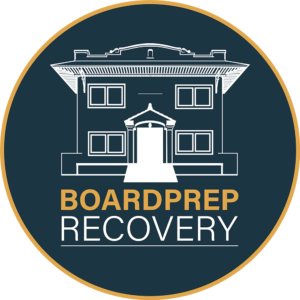In a study published in the West Journal of Emergency Medicine[1]—the first published report of its kind—examining the performance and outcomes of emergency room doctors enrolled in Physician Health Programs (PHPs) for substance use disorders (SUDs), it was found emergency physicians (EPs) do well following treatment of SUDs with monitoring in PHPs and generally return to the practice of emergency medicine.
Emergency physicians (EPs) are reported to have a higher rate of substance use disorder (SUD) than most specialties, although little is known about their prognosis. We examined the outcomes of emergency physician compared to other physicians in the treatment of substance use disorders in Physician Health Programs (PHP).
Methods: This study used the dataset from a 5-year, longitudinal, cohort study involving 904 physicians with diagnoses of SUD consecutively admitted to one of 16 state PHPs between 1995 and 2001. We compared 56 EPs to 724 other physicians. Main outcome variables were rates of relapse, successful completion of monitoring, and return to clinical practice.
Results: EPs had a higher than expected rate of SUD (odds ratio [OR] 2.7 confidence interval [CI]: 2.1–3.5, p<0.001). Half of each group (49% of EPs and 50% of the others) enrolled in a PHP due to alcohol-related problems. Over a third of each group (38% of EPs and 34% of the others) enrolled due to opioid use. During monitoring by the PHPs, 13% of EPs had at least one positive drug test compared to 22% of the other physicians; however, this difference was not significant (p=0.13). At the end of the 5-year follow-up period, 71% of EPs and 64% of other physicians had completed their contracts and were no longer required to be monitored (OR 1.4 [CI: 0.8-2.6], p = 0.31). The study found that the proportion of EPs (84%) continuing their medical practice was generally as high as that of other physicians (72%) (OR 2.0 [CI: 1.0–4.1], p = 0.06).
Conclusion: In the study EPs did very well in the PHPs with an 84% success rate in completion and return to clinical practice at 5 years. Of the 3 outcome variables measured, rates of relapse, successful completion of monitoring, and return to clinical practice, EPs had a high rate of success on all variables compared to the other physician cohort. These data support the conclusion that EM physicians do well following treatment of SUD with monitoring in PHPs and generally return to the practice of emergency medicine.
Previous research indicates the rate of SUDs among physicians is somewhere between 10% and 14%,[2] which is similar to that of the general population.[3] However, doctors who practice emergency medicine have been one of the three physician specialties most commonly reported as being over-represented in terms of being treated for SUDs,[4] accounting for 7% to 18% of physicians treated for SUDs and managed by PHPs, as compared to physicians in general.[5]
Even with these higher rates of SUD and participation in PHPs, there had been no published data—prior to this study—aimed specifically at the prognosis and recovery rate of emergency room doctors enrolled in PHPs.
In this latest research, a five-year longitudinal study—data was drawn from a total of 780 physicians (56 of whom were EPs) with diagnoses of substance use disorders from 16 state PHPs. The intent was to compare outcomes of EPs versus non-EPs and EPs enrolled in state PHPs. The characteristics being studied were rates of relapse, monitoring contract completion, and successful return-to-clinical-practice after five years.
It should be noted that, because there was no evidence of distribution clustering by time or program, it allowed the researchers to compare the 56 EPs to the 724 other physicians on a wide range of demographics, drug use and outcome measures.
Interestingly, the two groups (RPs and non-EPs) did not differ significantly regarding the primary substance of abuse, per their intake records: half of each group enrolled in a PHP due to alcohol-related problems, and more than a third of each group enrolled due to opioid use. Along with these findings, two other measures (history of intravenous drug use and frequency of use immediately prior to PHP enrollment) demonstrated no significant difference between EPs and their physician peers regarding their overall pattern of substance abuse prior to enrollment in PHPs.
Both general reports and lab reports (including required random drug testing) contributed to the data for all EPs and non-emergency room physicians who participated in the PHP-monitored treatment programs. On average, the study’s participants were tested in follow-up for 48 months.
The results of the study found EPs with SUDs were significantly over-represented in PHPs, which is consistent with previous research findings of higher rates of SUD by EPs when compared to other physicians.
Overall, this research concluded that emergency physicians do very well in Physician Health Programs, with an 84% success rate in completion and return to clinical practice at 5 years. And when analyzing the three outcome variables measured by the study—rates of relapse, successful completion of monitoring, and return to clinical practice—EPs had similar rates of success on all variables compared to their physician peers. And though emergency room doctors did not show statistically significant higher rates of success, EPs trended towards higher return-to-clinical-practice rates than non-EPs; plus, EPs demonstrated less license revocation that their non-EP associates.
In conclusion, the scientific data presented by this study indicates EPs do well following treatment for SUDs with monitoring in PHPs and in most cases return to the practice of emergency medicine.
[1] https://escholarship.org/uc/item/6m2122s7
[2] Hughes PH, Brandenburg N, Baldwin DC, Jr. et al. Prevalence of substance use among US physicians. JAMA. 1992;267:2333–2339; DuPont RL, McLellan AT, Carr G et al. How are addicted physicians treated? A national survey of Physician Health Programs. J Subst Abuse Treat. 2009;37:1–7.
[3] Sussman S, Lisha N, Griffiths M. Prevalence of the addictions: a problem of the majority or the minority? Eval Health Prof. 2011;34:3–56.
[4] https://pubmed.ncbi.nlm.nih.gov/23412081/
[5] https://www.ncbi.nlm.nih.gov/pmc/articles/PMC2590904/; Colleges AoAM. In AAMC. Washington DC: AAMC; 2008. 2008 Physician Specialty Data







